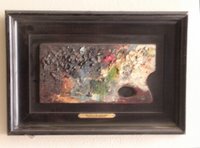Sunday, May 31, 2009
Tuesday, May 26, 2009
Richard Schmid and His Influence

"Richard Schmid and His Influence"
That could be the title of
almost any Palette and Chisel exhibition
held over the last 20 years.
Especially when you consider that the 12 artists
being shown will include:
Nancy Guzik
Rose Franzen
Scott Burdick
Sue Lyon
Paul Mullally
Clayton Beck III
Judith McCabe Renner
... all of whom have been P&C members
while living in Chicago
(and two of whom still are)
But sadly,
this upcoming exhibit
will be held
at the only American art club
older than the one at 1012 N. Dearborn ---
the Salmagundi Club in New York.
And just as sadly,
the show will only run for one week,
June 6-13, 2009
But let's face it,
NYC is a much bigger market,
and who wouldn't
prefer to show their paintings there?
***********
This will be will be an exhibit
of the Schmid family and inner circle,
presumably curated
with the approval of Schmid himself.
But I'd really like to see
an art museum curate
an exhibit that includes the many artists,
like Jeremy Lipking ,
who have
seen Schmid's work, read his books,
and acknowledged his influence,
without
necessarily having ever personally
studied with him.
Will any of us live long enough
to see such an event?
(more info can be found here )
That could be the title of
almost any Palette and Chisel exhibition
held over the last 20 years.
Especially when you consider that the 12 artists
being shown will include:
Nancy Guzik
Rose Franzen
Scott Burdick
Sue Lyon
Paul Mullally
Clayton Beck III
Judith McCabe Renner
... all of whom have been P&C members
while living in Chicago
(and two of whom still are)
But sadly,
this upcoming exhibit
will be held
at the only American art club
older than the one at 1012 N. Dearborn ---
the Salmagundi Club in New York.
And just as sadly,
the show will only run for one week,
June 6-13, 2009
But let's face it,
NYC is a much bigger market,
and who wouldn't
prefer to show their paintings there?
***********
This will be will be an exhibit
of the Schmid family and inner circle,
presumably curated
with the approval of Schmid himself.
But I'd really like to see
an art museum curate
an exhibit that includes the many artists,
like Jeremy Lipking ,
who have
seen Schmid's work, read his books,
and acknowledged his influence,
without
necessarily having ever personally
studied with him.
Will any of us live long enough
to see such an event?
(more info can be found here )
Hans Bittner: Artist is Snappy Snipper

(the following texts take from newspaper clips of the 1960's)
Bittner's esquisite, doily like scissor cuts are on display at the Neville-Sargent Gallery in Evanston through July 12, They will then be featured at the Paintin place in Oak Park for the rest of the month..
The soft spoken, white haired artist began doing scissor cuts in 1924 , two years before he immigrated to the United States. As an art student in Germany he studied painting, architecture and glasswork. He stumbled upon the rare silhouette art by accident.
"I saw some of the scissor cuts in a museum in Europe and I decided to take it up" Bittner says. "I've been doing it ever since"
Until Bittner retired six years ago, scherenscnitte was his hobby. He made his living as a commercial artist specializing in animation and cartooning.

The soft spoken, white haired artist began doing scissor cuts in 1924 , two years before he immigrated to the United States. As an art student in Germany he studied painting, architecture and glasswork. He stumbled upon the rare silhouette art by accident.
"I saw some of the scissor cuts in a museum in Europe and I decided to take it up" Bittner says. "I've been doing it ever since"
Until Bittner retired six years ago, scherenscnitte was his hobby. He made his living as a commercial artist specializing in animation and cartooning.


Bittner is a master of the old art form which, he said, was used in Europe from the 17th C. up to 1924. The art dates all the say back to the early Chinese and Japanese. One of the very few artists left in the world who create scissors-cut as a fine art, Bittner is the only miniature silhouette artist in the world today, he said.

Hans Oskar Bittner: Member: Palette and Chisel Acad. (dir. 1968-), Municipal Art League (dir, 1969-). Artist Guild Chicago. Exhibited: Ill Festival Art, Chicago 1964; three Main Library, Chicago; Chicago Chap Artists Equity Assn; Rockford College, Kenosha College & Univ. Wisconsin Stevens Point;
Work also shown on ABC and NBC. Awards (including the “You Asked for it” show in 1956): Several second place and honorable mentions, Palette and Chisel Academy and Municipal Art League; gold medal ,Col. Frank Chesrow, Chicago 1972.
Work: Collection of Crown Prince Wilhelm; Breslau Kunst Museum; Breslau Art Galleries; Chicago Art Galleries.
Positions: Glass and display designer, Goldblatt stores, 1930-1935; commercial artist, Vogue Wright, 1935-1945; artist and designer, Wilding Picture studio, 1952-1968 (the movie studio of Charlie Chaplin)
Work also shown on ABC and NBC. Awards (including the “You Asked for it” show in 1956): Several second place and honorable mentions, Palette and Chisel Academy and Municipal Art League; gold medal ,Col. Frank Chesrow, Chicago 1972.
Work: Collection of Crown Prince Wilhelm; Breslau Kunst Museum; Breslau Art Galleries; Chicago Art Galleries.
Positions: Glass and display designer, Goldblatt stores, 1930-1935; commercial artist, Vogue Wright, 1935-1945; artist and designer, Wilding Picture studio, 1952-1968 (the movie studio of Charlie Chaplin)

Now he spends four or five hours a day drawing and cutting the silhouettes in his Chicago studio. A member of Chicago's prestigious Palette and Chisel Academy and the Municipal Art League, he has won many awards for his unusual work.
Silhouette making was quite popular between 1750 and 1850 but Bittner and Hubert Leslie, an Englishman now in his 90's, are the only artists known for the scissor cuts.
The patient artist draws a scene and then traces the design on the back of sturdy black paper. Using finely honed manicure scissors, he cuts out individual figures and background elements. Each scene is cut from a single sheet of paper. One slip could ruin the delicate, often pencil-thin lines of the silhouette.
Eight to ten hours are spent cutting out simple scenes with a few solid figures, but large or complicated designs can take up to 60 hours. One very large forest scene with detailed trees, animals, cloud and steams took 200 hours of cutting time.
The lacy scissor cuts, ranging in size from a few inches square to over a foot high depict a spectrum of subjects. There are clowns, hunters, gnomes, gondoliers, Indians, modern dancers, picnickers and historic figures like Paul Revere. One of Bittner's funniest scissors cuts shows a fat woman huffing and puffing while pushing her husband and his roadster up a steep hill.
Bittner's favorites are scenes of life from 100 or 200 years ago, some inspired by old etchings. He likes to create noblewomen wearing hoop skirts and sun bonnets or elaborate wigs, dandies dressed in knee breeches and tri-cornered hats, stately coaches drawn by prancing horses and massive schooners in full scale.
Silhouette making was quite popular between 1750 and 1850 but Bittner and Hubert Leslie, an Englishman now in his 90's, are the only artists known for the scissor cuts.
The patient artist draws a scene and then traces the design on the back of sturdy black paper. Using finely honed manicure scissors, he cuts out individual figures and background elements. Each scene is cut from a single sheet of paper. One slip could ruin the delicate, often pencil-thin lines of the silhouette.
Eight to ten hours are spent cutting out simple scenes with a few solid figures, but large or complicated designs can take up to 60 hours. One very large forest scene with detailed trees, animals, cloud and steams took 200 hours of cutting time.
The lacy scissor cuts, ranging in size from a few inches square to over a foot high depict a spectrum of subjects. There are clowns, hunters, gnomes, gondoliers, Indians, modern dancers, picnickers and historic figures like Paul Revere. One of Bittner's funniest scissors cuts shows a fat woman huffing and puffing while pushing her husband and his roadster up a steep hill.
Bittner's favorites are scenes of life from 100 or 200 years ago, some inspired by old etchings. He likes to create noblewomen wearing hoop skirts and sun bonnets or elaborate wigs, dandies dressed in knee breeches and tri-cornered hats, stately coaches drawn by prancing horses and massive schooners in full scale.
***********
If only Hans Bittner,
like Kara Walker,
had used his scissors cuts to explore
"race, gender, sexuality, violence and identity",
he might now be better known!
Monday, May 25, 2009
Sunday, May 24, 2009
2009 Election

Just got this curious letter in the mail,
signed by
"The Palette and Chisel Recruiting Advisory Group"
And who are they?
According to the By-laws:
Section 1. Recruiting Advisory Group. The Board of Directors shall establish a recruiting advisory group each January. The purpose of the recruiting advisory group shall be to prepare a list of Voting Members who are willing to serve either in the capacity of Director or Officer and to stand for election at the next annual or voting meeting. Voting members may have their names placed on such list simply by notifying the recruiting advisory group to add their names to the list.
But the minutes of the Board
record that the Board
did no such thing in 2009.
So -- who is this committee -
which was never established,
never reported to the Board,
and presumably never met?
(I've been told that it consists of one person,
carried over from last year's committee.
But guess what:
there is no record of that committee ever having
been established, reported, or convened.
If we've got by-laws --
shouldn't we attempt follow them?
The point of having a
Recruitment Advisory Committee
is to get new people involved.
record that the Board
did no such thing in 2009.
So -- who is this committee -
which was never established,
never reported to the Board,
and presumably never met?
(I've been told that it consists of one person,
carried over from last year's committee.
But guess what:
there is no record of that committee ever having
been established, reported, or convened.
If we've got by-laws --
shouldn't we attempt follow them?
The point of having a
Recruitment Advisory Committee
is to get new people involved.
Monday, May 18, 2009
Exhibit: Sculpture and Drawing 2009
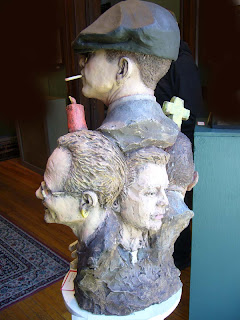 Roger Akers
Roger AkersChicago figures
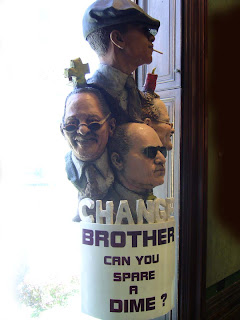 Roger Akers
Roger AkersObama, Rev. Wright etc.
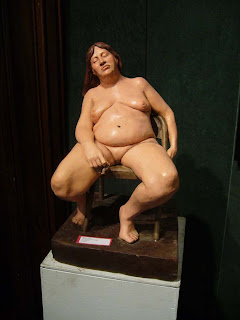 Roger Akers
Roger Akers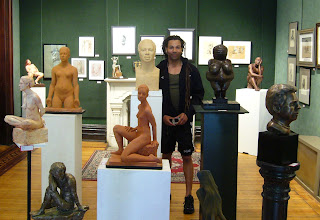
from the left: work by Roger Akers, Misha Livshulz,
Prehistoric Venus by Rich Morrow,
portrait by Al Hruby
 Joan Stachnik
Joan Stachnik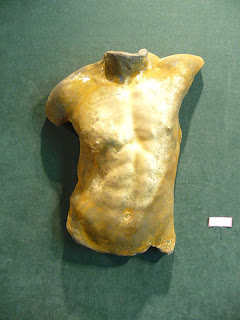 Guohua Ni
Guohua Ni Rich Bloomfield
Rich Bloomfield Rich Bloomfield
Rich Bloomfield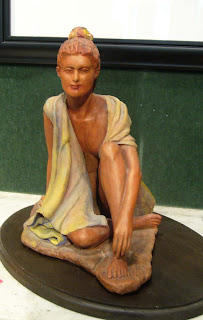 Lois Raub
Lois Raub Sara Miller
Sara Millerportrait of Studs Terkel
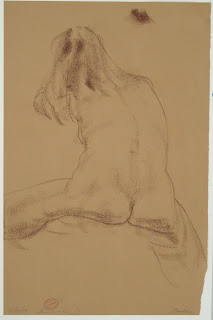 Phil Renaud
Phil Renaud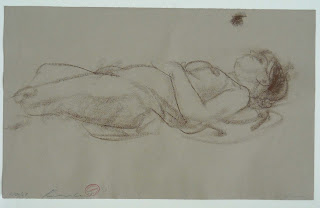 Phil Renaud
Phil Renaud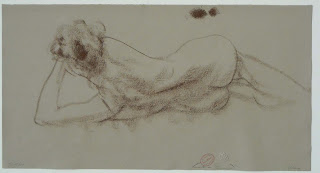 Phil Renaud
Phil Renaud Phil Renaud
Phil Renaud Donna Gerdy
Donna Gerdy Bert Stephens
Bert Stephens Bert Stephens
Bert Stephens
Bert Stephens
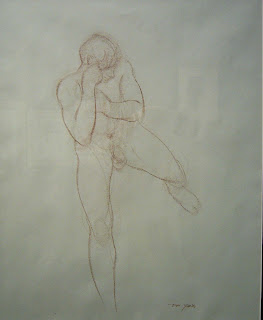 Don Yang
Don Yang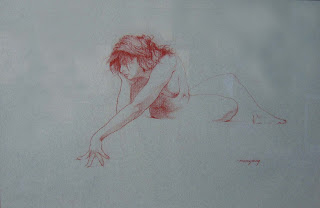 Don Yang
Don Yang Thomas Gianni
Thomas Gianni Rich Bloomfield
Rich Bloomfield Peggy Sanders
Peggy Sanders Mike Wilkins
Mike Wilkins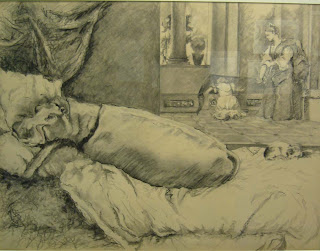 Nancie King Mertz
Nancie King Mertz(after Titian)
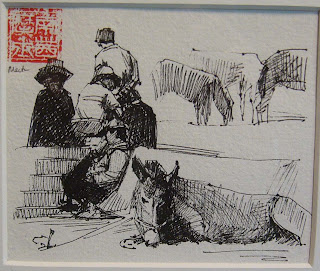 Nancie King Mertz
Nancie King Mertz Louisa Boshardy
Louisa Boshardy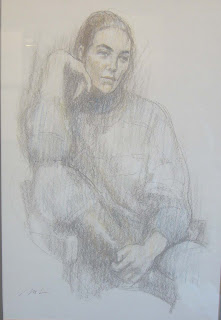 Misha Liangleben
Misha Liangleben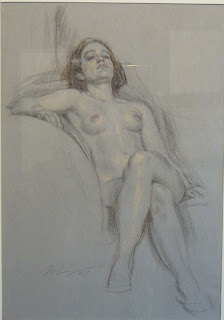 Misha Liangleben
Misha Liangleben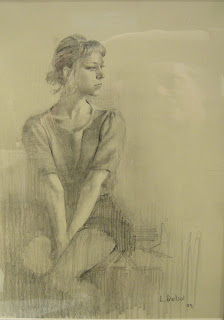 Lenin Delsol
Lenin Delsol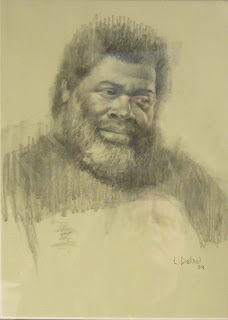 Lenin Delsol
Lenin Delsol Lawrence Paulsen
Lawrence Paulsen Judith McCabe Renner
Judith McCabe Renner John Bostjancich
John Bostjancich John Bostjancich
John Bostjancich Henry Mcalevy
Henry Mcalevy Debra Balchen
Debra Balchen Danaya Zhakarava
Danaya Zhakarava Charlotte Arnold
Charlotte Arnold Brian Clare
Brian Clare Bodo Stolczenberger
Bodo Stolczenberger Barbara Humbert
Barbara Humbert




















